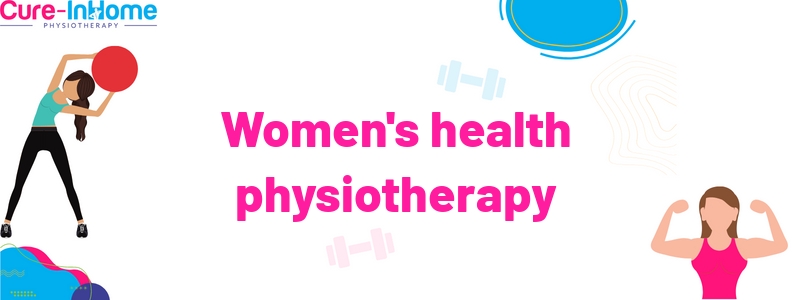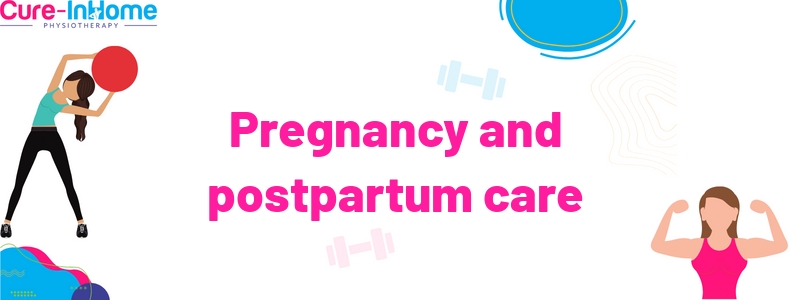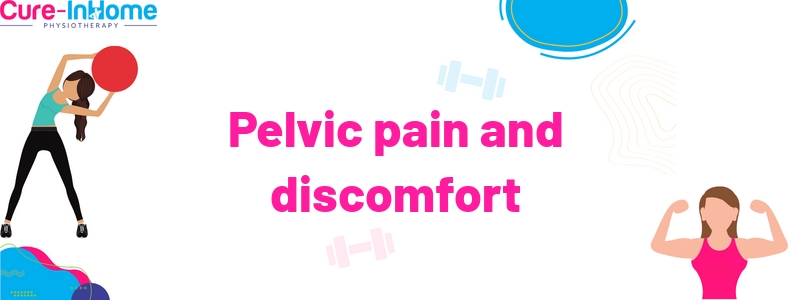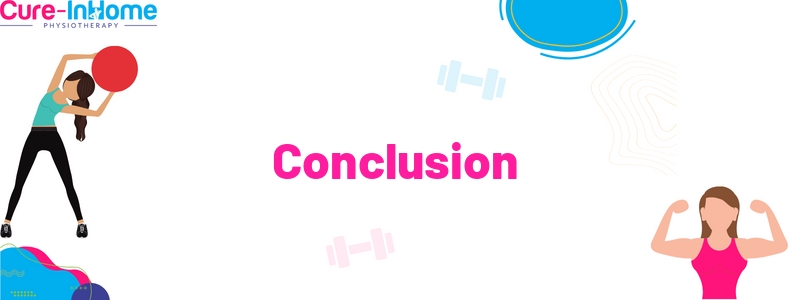
Women’s Health Physiotherapy
Women’s Health Physiotherapy
Women’s health physiotherapy is a specialist area dedicated to the treatment of conditions specific to women. It is a form of physical therapy that focuses on providing women with thebest possible care for pelvic, abdominal and back pain, incontinence and postnatal recovery. Physiotherapists specialising in women’s health use an array of assessment techniques and interventions to offer evidence-based management plans tailored to individual needs.
The goal of Women’s health physiotherapy is to assess, diagnose and provide conservative management strategies for conditions like pre-menstrual syndrome (PMS), pelvic floor dysfunction, urinary incontinence, sexual dysfunction, pregnancy-related musculoskeletal pain and postpartum rehabilitation. Alas, treatments may include exercise therapy and lifestyle modification programs which are designed to improve movement and muscular health in order to reduce symptoms. Physical therapists are also able to provide education about appropriate alignment during activities like lifting, sitting or standing to prevent further injury or complications.
By offering tailored strategies for each patient’s individual needs, Women’s health physiotherapy can help restore quality of life while also initiating long-term healing benefits. With the help of experienced professionals in this field, many women can now find relief from their ailments without relying on medications or undergoing surgery.

Pregnancy And Postpartum Care
Pregnancy and postpartum care is a critical part of Women’s health physiotherapy. It is of most importance to understand the changes your body undergoes throughtout the duration of pregnancy in order to ensure optimal safety and comfort during this transitional period of life. These types of might include increased joint laxity, pelvic girdle pain and other musculoskeletal changes as a result of weight gain or alignment issues. Postpartum care focuses on regaining velocity and strength, along with restoring normal postural alignment and stability. Physiotherapists can assist women in improving their core strength following childbirth, increasing range of motion, relieving pain from scar tissue, resolving incontinence or assisting with any biomechanical imbalances that may have developed during pregnancy. Pregnancy and postpartum care can also help reduce low back pain caused by a weakening pelvic floor, decrease neck and shoulder tension that result from breastfeeding or carrying a baby, toughen abdominal muscles following delivery, enhance the body’s ability to perform activities of daily living after birth like picking up a child and lifting objects off the ground without straining, improve sleep quality and energy levels regained following labor. Overall these physiotherapeutic interventions have been proven to result in improved quality of life for both expectant mothers and new mothers akin.

Pelvic Floor Physiotherapy
Pelvic floor physiotherapy is an evidence-based medical practice for the diagnosis and treatment of pelvic floor dysfunction in women. It works to reduce pelvic pain, improve core strength, and promote healthy bladder and bowel function. This kind of physiotherapy is a comprehensive treatment program that involves both manual therapy (exercises prescribed by a physiotherapist) and behavioural modifications.
During a pelvic floor physiotherapy session, the physiotherapist will evaluate the patient’s individual condition and work with them to develop an individualised treatment plan which will likely include muscle fortifying exercises, relaxation techniques, lifestyle modifications like diet and exercise changes, along with internal vaginal or rectal exams to identify areas of dysfunction. Depending on the patient’s response to treatment, they may also be taught biofeedback or neuromuscular electrical stimulation to further assist in re-educating muscles.
The ultimate goal of pelvic floor physiotherapy is to alleviate symptoms, reduce pain, restore normal function and improve quality of life over time. With dedicated patient commitment to the recommended strategies implemented by the pelvic floor physiotherapist, a woman can more often than not expect improved bladder and/or bowel control; increased sexual satisfaction; improved core strength; more comfortable positioning during pregnancy; decreased urinary incontinence episodes; reduction in pelvic pain; reduced risk of childbirth injuries; overall enhanced health.

Incontinence And Bladder Control Rehabilitation
Incontinence and bladder control rehabilitation help women of all ages improve their urinary health. This kind of physiotherapy can definitely be beneficial for those who are struggling with one or more of the many forms of incontinence, like stress incontinence, urge incontinence, overflow incontinence, and functional incontinence. Through a tailored program designed to meet the individual’s needs, women can toughen their pelvic floor muscles, increase bladder capacity and control both urgency and frequency of urination. In addition to fortifying these muscles, some treatments may also include relaxation techniques like diaphragmatic breathing or biofeedback training to further enhance the effects. With regular exercises prescribed by a well trained physio therapist and lifestyle changes, many women have noticed significant improvements in their continence status. These types of improvements may mean less episodes of leakage, decreased urgency feeling when they do leak and overall improved quality of life.

Pelvic Pain And Discomfort
Pelvic pain and discomfort are both symptoms that can have many causes. Women’s health physiotherapy is a form of therapy focused on treating pain and discomfort in the pelvic region. These types of treatments can address issues like muscular weakness, tightness, joint dysfunction, restricted movement in the pelvic area or problems with bladder or bowel function. Physiotherapists use manual treatment techniques and exercise to improve the mobility and strength of muscles in the pelvis and core area to relieve pain and restore normal functioning. Education on posture, body mechanics and lifestyle modifications can also be helpful in addressing pelvic pain. For example, if sitting for long periods is causing or exacerbating discomfort, a Physiotherapist can assess posture and offer advice about optimal ergonomics for your office chair or desk set-up. Women’s health physiotherapy can help women with conditions like endometriosis, chronic pelvic pain syndrome (CPPS) or irritable bowel syndrome (IBS). It is also beneficial for women who have had musculoskeletal issues resulting from pregnancy or childbirth including diastasis recti (separation of abdominal muscles), incontinence or prolapse. With the right assessment and individualized exercises, Physiotherapists can help women to reduce their pain levels and maximize their quality of life.

Menopause And Osteoporosis Management
Menopause and osteoporosis management is a critical part of women’s health physiotherapy. During menopause, estrogen levels start to decline. This tends to result in thinning of the bones, which increases the risk of osteoporosis. Physiotherapy can help manage and reduce symptoms associated with menopause, like hot flashes and night sweats, along with improve bone mineral density through targeted exercises and postural correction.
Osteoporosis prevention is also key during this time. Exercise programs that focus on strength training are of most importance for improving muscle strength and bone density in women undergoing menopausal changes. A balance program should be included to reduce the risk of falls. Posture is also important; maintaining a neutral spine position helps with appropriate weight distribution throughtout the duration of the body which prevents further deterioration of weakened bones in locations like the lower back or hips.
Finally, lifestyle modifications are important for managing both menopausal symptoms along with reducing the risk of developing osteoporosis later on in life. These types of modifications include improving dietary habits by eating a balanced diet filled with calcium-rich foods, getting adequate amounts of sleep each night (7-8 hours) and avoiding smoking or excessive alcohol consumption to reduce additional stress placed on already weakened bones. Women’s health physiotherapists are experienced in helping their clients manage these changes at every stage of life and deliver a comprehensive plan tailored towards individual needs.

Conclusion
Women’s health physiotherapy is a critical and necessary form of therapy for women of all ages. It can help improve physical symptoms, reduce post-operative complications, and improve overall physical function. Alas, it can improve overall health and prevent diseases or injuries related to the female anatomy. With appropriate education and awareness, more women can take advantage of this specialized form of physiotherapy to restore their body’s strength, balance, flexibility and coordination in order to reach their optimal level of physical health.
